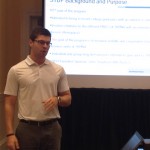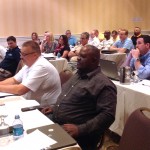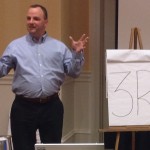The US has had a few quiet years in terms of hurricanes, but now that we have Erika causing damage and we look back at the anniversary of Hurricane Katrina it’s time to review. Are we ready for a hurricane, or even a tropical storm? Lots of resources are available and we wanted to share a few to help.
Of course, The Weather Channel is a great place, either on TV, their app, or weatherchanel.com. They have a special section just for hurricane information.
If you have not visited lately. Ready.gov provides a whole series of great things from checklists to things like, how to talk to your children, how to plan and more like How to build a disaster preparedness kit. Even if a big hurricane does not hit this year, the peace of mind and the little time it takes up front is well worth it.
The Red Cross also has an easy to search library that is full of great tools to help you prepare for natural events such as hurricanes, snow storms (yes winter is on its way too), and much more. Plus, you can join in and help those affected by disasters by finding locations to donate blood or volunteer. We all want to help, but sometimes the best way is to join up with a long-time organization like The Red Cross who’s organized efforts have helped millions. Find out more by visiting their site.
The CDC (Centers for Disease Control) also has great information and an important reminder. In a disaster you may not have access to a computer, cell phone, tablet – all those things we’ve come to rely on heavily for fast access to information and storing information may not be availab le to you, so keep some old fashioned paper stuff on hand too.
Most importantly, start now. We’ve all seen the news reports of empty store shelves and people lining up to get gas, water, and plywood to board up windows and doors. Starting well ahead of time can save you time and reduce your stress level, knowing you won’t need to make that mad dash for supplies, or – what did you forget.
Lastly, take a look at your home and what you can do there to improve. Many residential homes and businesses use plywood to secure windows and doors, but AIN Plastics Florida has researched and found a better way that lets you put up hurricane protection on windows and doors ahead of time because it’s easy, reusable and it lets in the light! We call this material HurriGuard®
HurriGuard® has passed missile testing and is Miami Dade County approved for hurricane protection. (MIAMI DADE APPROVAL: 13-1126.21 FLORIDA APPROVAL: 16699) What is HurriGuard®? It’s actually a triple wall polycarbonate which makes it very strong and very lightweight. In fact, individuals can often install their own because it weighs about 1/4 what an average sheet of plywood weighs. The polycarbonate sheets come in sizes up to 4×8 and they can be cut to size. A channel system installed around the window allows for the panels to be installed within a short time and, unlike plywood they can be reused. Plywood soaks up water leaving it damaged and only good for a one-time use but HurriGuard® has a 10 year warranty against UV degredation. As a Florida business AIN Plastics Florida is happy to provide such a quality product. We have it in stock and ready to ship within Florida. If you have more questions please feel free to call us at 813-242-9162 or visit the HurriGuard® website.
In addition to windows and doors here are a few other things to check for:
Are rain/storm gutter clean and clear of debris?
If you currently have hurricane shutters are they in working order?
Be sure any loose objects are put away or secured
Remove any damaged or dead trees or shrubs
Check your roof and make sure shingles, tiles etc. are in good repair
Scott Moore
Branch Manager
ThyssenKrupp Materials NA AIN Plastics Division


 then onto ThyssenKrupp Industrial Services, next up was ThyssenKrupp Aerospace and I also spent a week at KenMac Metals. Through the rotations, I had the opportunity to go on sales calls and see the applications of our materials for TKMNA. I saw everything from cranial baby helmets being produced to seeing the F-150 stamping plant and touring the Boeing facility that could fit 75 NFL football fields inside it to riding along on the BMW test track!
then onto ThyssenKrupp Industrial Services, next up was ThyssenKrupp Aerospace and I also spent a week at KenMac Metals. Through the rotations, I had the opportunity to go on sales calls and see the applications of our materials for TKMNA. I saw everything from cranial baby helmets being produced to seeing the F-150 stamping plant and touring the Boeing facility that could fit 75 NFL football fields inside it to riding along on the BMW test track!










































